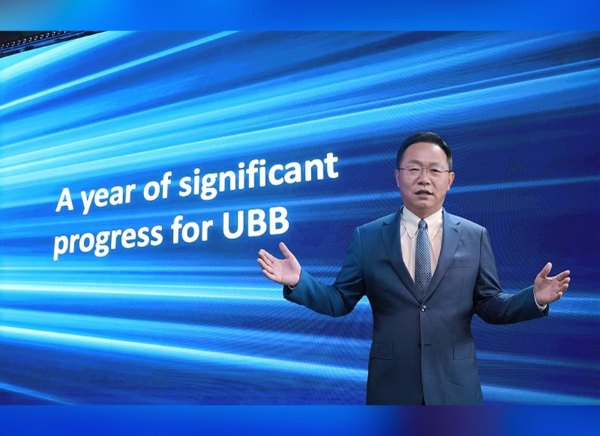
During the 9th Ultra-Broadband Forum (UBBF 2023), Huawei’s Executive Director of the Board and Chairman of the ICT Infrastructure Managing Board, David Wang, delivered a keynote presentation entitled “UBB5.5G and the Maximization of Digital Productivity.” This address shed light on the latest developments and best practices within the ultra-broadband industry. Wang provided insights into the strategic trajectory of ultra-broadband (UBB), which involves upgrading networks, accelerating the widespread adoption of digital technologies, and optimizing digital productivity.
The integration of digital technologies into the real economy has been a driving force behind increased productivity, referred to as digital productivity. This digital productivity has swiftly become a foundational growth engine for the digital economy. Technologies such as cloud computing, artificial intelligence (AI), 5G, and ultra-broadband (UBB) are continually evolving and are now manifesting in the form of new digital services for both enterprises and households. This accelerated digital transformation is bringing about enhanced intelligent entertainment, living, and working experiences for the masses, further contributing to advances in digital productivity.
Wang pointed out that while ultra-broadband networks initially aimed to provide connectivity, they have now shifted their focus towards delivering superior user experiences. In the era of 5.5G, ultra-broadband’s core mission is to maximize the productivity of digital services, ensuring easy and efficient access for everyone, regardless of their location. This next-generation digital infrastructure will offer ubiquitous 10-gigabit access, elastic ultra-broadband transport, and substantial computing power supported by hyper-converged data centers. The deployment of this new digital infrastructure is set to expedite the development of the digital economy, and Huawei is committed to collaborating with customers and industry partners to advance F5.5G and Net5.5G evolution, propelling the entire ultra-broadband industry toward maximizing digital productivity.
Wang emphasized that achieving the goal of maximizing digital productivity requires addressing three crucial challenges. First, the industry must find ways to provide the immense computing power required for digital services. Second, it needs to guarantee connectivity services for a vast number of concurrent users. Third, it must ensure universal access and a high-quality user experience for individuals, regardless of their location.
He then detailed the upgrades that productivity-centric ultra-broadband networks will need in the future. Ubiquitous 10-gigabit access can be achieved by accelerating the upgrade of mobile broadband, home broadband, enterprise campus networks, and enterprise private line services to 10 Gbps. This upgrade will result in ubiquitous 10-gigabit mobile broadband, seamless 10-gigabit home networks, enhanced 10-gigabit campus connectivity for organizations, and elastic, high-throughput 10-gigabit private line services. These high-quality 10-gigabit connections will extend the benefits of digital services to a broader audience, benefiting people and organizations worldwide.
At UBBF 2023, the “10 Gbps City Initiative” was jointly unveiled by the UAE Telecommunications and Digital Government Regulatory Authority (TDRA), Omdia, etisalat by e&, MTN South Africa, Huawei, and others. This initiative advocates the development of fully connected 10 Gbps cities to provide a seamless network experience, expedite the digital-intelligent transformation of industries, and enhance digital productivity.
During the keynote presentations, speakers shared innovative concepts related to the implementation of the 10 Gbps City Initiative. Eng. Saif Bin Ghelaita, Executive Director for Technology Development Affairs of the TDRA, stressed the vital role governments play in the establishment of ultra-broadband infrastructure to ensure inclusive and universal digital services, bridging digital divides in the intelligent world. Local governments and regulators can accelerate the formulation of supportive policies for 10 Gbps City pilot projects.
Richard Mahony, Vice President of Omdia, highlighted that 10 Gbps City is an essential form of infrastructure for the implementation of national digital strategies and the growth of the digital economy. Building 10 Gbps cities involves providing 10 Gbps connections to individuals, homes, enterprises, and campuses. It also includes the development of 400GE/800GE converged transport networks and artificial intelligence data center networks (AI DCNs) related to these 10 Gbps access scenarios.
Numerous cities worldwide have unveiled their digital economy strategies for the year 2030. Cities like Beijing, Shanghai, Hangzhou, and Riyadh are actively exploring ways to implement the 10 Gbps City and 10 Gbps Society concepts, unlocking new potential for the digital economy.